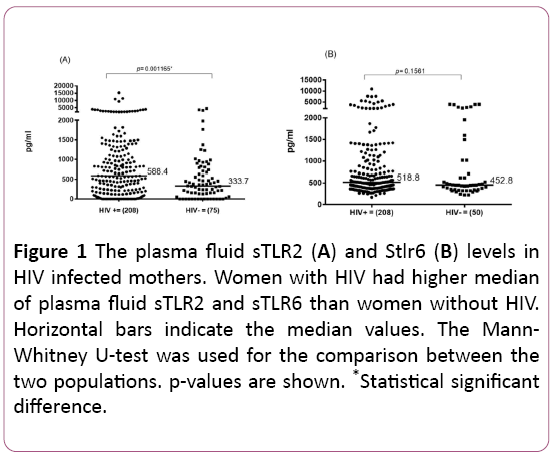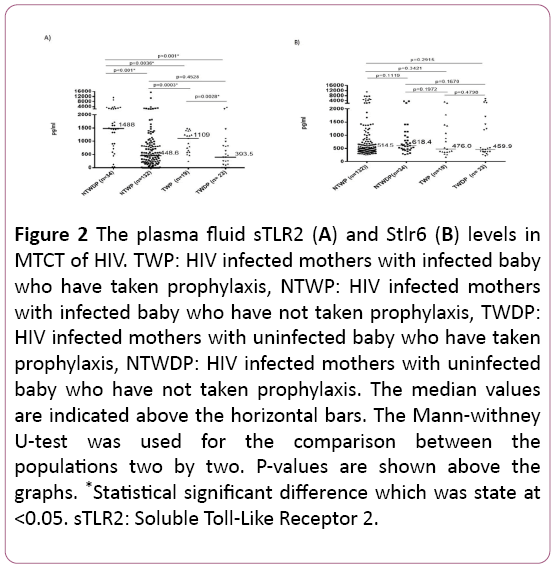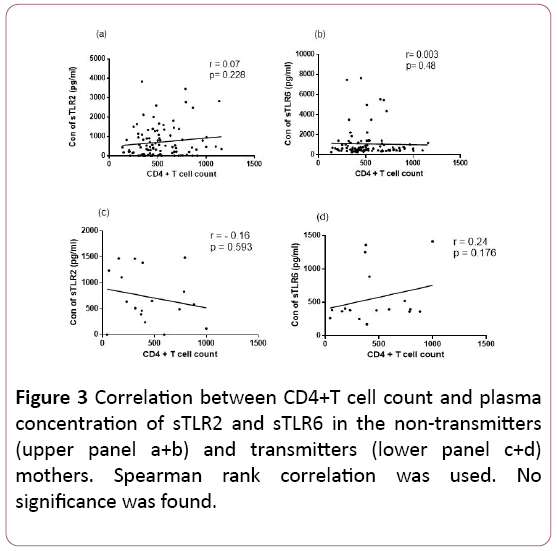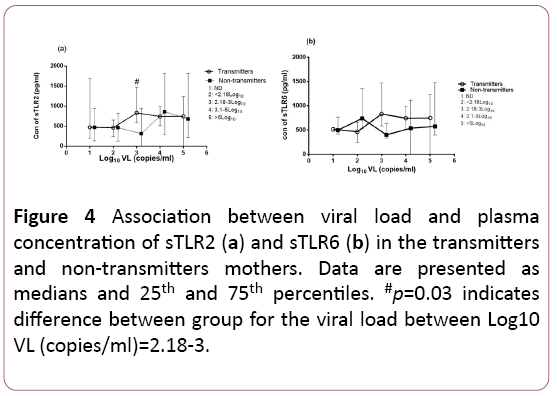Linda Chapdeleine Mouafo Mekue1,2#, Céline Nguefeu Nkenfou2,3#* , Marie Nicole Ngoufack2,4, Jules Roger Kuiaté1, Jacques Henri Thèze5, Vittorio Colizzi6 and Alexis Ndjolo2,7
1Faculty of Sciences, University of Dschang, Dschang, Cameroon
2Chantal BIYA International Reference Centre, Yaounde, Cameroon
3Higher Teacher’s Training College, University of Yaounde, Yaounde, Cameroon
4Faculty of Sciences, University of Yaounde I, Yaounde, Cameroon
5Diaccurate, Institut Pasteur, Paris, France
6Faculty of Sciences, University of Torvergata, Roma, Italy
7Faculty of Medicine and Biomedical Sciences, University of Yaounde, Yaounde, Cameroon
#These authors contributed equally to this work
Corresponding Author:
Céline Nguefeu Nkenfou
Higher Teacher’s Training College
University of Yaounde I
P.O. Box 47, Yaounde, Cameroon
Tel: +237 75 57 35 19
Fax: +237 22 315456
E-mail: nkenfou@yahoo.com
Received Date: March 09, 2018; Accepted Date: March 20, 2018; Published Date: March 23, 2018
Citation: Mekue LCM, Nkenfou CN, Ngoufack MN, Kuiaté JR, Thèze JH, et al. (2018) Receptor 2 And 6 in the Mother to Child Transmission of Human Immunodeficiency Virus Type-1. Biochem Mol Biol J Vol. 4: No.1:10. DOI: 10.21767/2471-8084.100059
Keywords
Mother-to-child-transmission; sTLR2; sTLR6; Innate immune response; HIV; Anti-retroviral treatment
Introduction
In 2015, 150,000 new infants were vertically infected with human immunodeficiency virus type 1 (HIV) by their mothers [1]. High percentages (90%) of these infants live in developing countries. These countries are known for their difficulties in implementing prevention from Mother-to-child transmission (PMTCT) in opposite to industrialized countries. Despite the efforts, the rate of transmission is still high in sub-Saharan countries. This rate was estimated at 5.6% in 2015 in Cameroon [2]. It is known that even with PMTCT there exist residual transmissions of 2%. Without exposure to any PMTCT intervention this rate is estimated at 31.3% [3].
A number of factors have been shown to contribute to prevention or acquisition of infections; antiretroviral treatment (ART) (that suppress viral replication and thus reduce the viral load); Host factors involved in innate and acquired immunity and viral factors (viral genotype) [4,5]. Some of these factors have been described with contradicting results when different populations are studied.
The innate immune system plays a role in the first line of defense in protecting the host. They recognize highly conserved pathogen-associated molecular patterns (PAMPs) using the pattern recognition receptors. Toll like receptors (TLR) are key immune components for defense mechanism. They are type 1 trans-membrane glycoproteins recognizing efficiently and reacting promptly in response to pathogens [6-8]. In humans eleven members of the TLR family have been described to date and each can activate a unique downstream gene profile [9]. They recognized molecular structures like, lipids or lipopeptides [10], proteins [11] specifically P17 and P24 for HIV, glycoproteins (especially gp 41 for HIV) [12] and nucleic acids [13]. Soluble forms of these receptors have been found to reduce the expression level and function of its membrane form, but also play a role in host protection [6].
A previous study conducted showed that soluble toll like receptor 2 (sTLR2) is highly expressed in breast milk [14], and that it inhibits HIV-induced cellular activation and infection [15]. A potential role of TLR2 in chronic immune activation and viral replication in HIV infection has been reported [16]. As well amniotic fluid level concentrations of soluble toll like receptor 1 (sTLR1), soluble toll like receptor 2 (sTLR2) and soluble toll like receptor 6 (sTLR6) were found to be high in women with microbial invasion of the amniotic cavity and histological chorioamnionitis [17].
To the best of our knowledge, no study has looked at the plasma concentration level of the soluble form of TLR2 and TLR6 in the context of mother to child transmission of HIV-1. Therefore the aim of the current study was to determine the plasma concentration level of sTLR2 and sTLR6 in the context of MTCT.
Materials and Methods
Patients and sample collection
HIV infected mother with babies less than 1 year were enrolled in the study as test group. A control group made of non-infected mothers with babies less than one year old was also recruited. Blood were collected from these mothers and their plasma was used for laboratory analyses. Dried blood spots were collected from babies for HIV DNA-PCR diagnosis.
CD4+T cell counts and plasma viral loads
CD4+ T cell counts of peripheral blood were determined using a FACSCalibur flow cytometer (Becton Dickinson Immuno-cytometry System (BDIS), San Jose, CA, USA). Plasma HIV-1 RNA loads were determined by Abbott Real-time HIV-1 assay (Abbott Molecular Diagnostics, Wiesbaden, Germany) with a detection limit of 150 copies/ml (2.18 log) according to the manufacturer’s instructions, using the 200μl protocol. The HIV status of the babies was determined using the Amplicor HIV-1 Monitor kit version 1.5 (Roche Diagnostics, Alameda, CA) according to the manufacturer’s instructions.
• Mothers were grouped according to the status of the babies and whether or not they underwent PMTCT. So, 5 groups were constituted:
• Group 1: Mother who have followed the PMTCT protocol and have uninfected babies (NTWP);
• Group 2: Mother who have followed the PMTCT protocol, and have infected babies (TWP);
• Group 3: Mother who have not followed the PMTCT protocol and have uninfected babies (NTWDP);
• Group 4: Mother who have not followed the PMTCT and have infected babies (TWDP);
• Control group: HIV negative mothers with uninfected babies.
Quantification of sTLR2 and sTLR6
The plasma levels of sTLR2 and sTLR6 were determined using sandwich enzyme-linked immuno-sorbent assays (MyBiosource, Inc San Diego, USA) according to the manufacturer’s instructions. Detection limit for the sTLR2 kits was 0.1 ng/mL and 0.1 pg/ml for sTLR6. Samples were not diluted and manipulated in duplicate. Absorbance values were measured at 450 nm using a Multiskan FC ELISA reader (Thermo Fisher Scientific, Waltham, MA).
Ethics statement
The study was reviewed and approved by the national ethic committee under the Number N°2013/11/375/L/CNERH/SP and the division of operational research of the Ministry of Public Health of Cameroon under the number D30-63/L/ MINSANTE/SG/DROS/CRC/CEA2/DTLC. The national and international regulations guiding the use of human subjects in biomedical research were followed during the study. Written informed consent was obtained from the mothers as well as proxi consent for their babies.
Statistical analysis
The demographic and clinical characteristics were compared using unpaired t-tests for continuous variables (presented as the mean ± SD) or the Mann–Whitney U-test for nonparametric variables (presented as the median along with range). Categorical variables were compared using Fisher’s exact test and are presented as a percentage (%). Because plasma concentrations of sTLR2 were not distributed normally, a non-parametric test (Mann–Whitney U-test) was used for analyses. Spearman partial correlation analysis was used to adjust data for the CD4 count. Differences were considered statistically significant at p< 0.05 for 2-sided test. Statistical analyses were performed using either GraphPad Prism 5.03 for Mac OSX (GraphPad Software, San Diego, CA, USA).
Results
Demographic data
Overall a total of 283 mothers were included from 2012 to 2015 in the present study. 73.4% (208/283) were HIV infected and 26.5% (75/283) were HIV non infected (controls). A percentage of 63.5% (132/208) mothers were HIV infected who have followed the PMTCT protocol with HIV non infected babies (NTWP). That of 9% (19/208) were HIV infected who have followed the PMTCT protocol with HIV infected babies (TWP). Thirty-four mothers (16.5%) were HIV infected who have not followed the PMTCT protocol with HIV non infected babies (NTWDP). Finally 11% (23/208) mothers were HIV infected who have not followed the PMTCT protocol with HIV infected babies (TWDP). A total of 42 (18.7%) children were HIV infected. The ARV drugs taken by mother in the study vary from monoprophylaxis (sdNVP) to the highly active antiretroviral therapy (with option B+ as the mostly used protocole). The demographic and clinical characteristics of these mothers are presented in Table 1.
| Variables |
TWP |
TWDP |
NTWP |
NTWDP |
HIV neg |
| (n=19) |
(n=23) |
(n=132) |
(n=34) |
(n=75) |
| Mothers’ age |
26.8 ± 6.3 |
28.4 ± 5.5 |
29.6 ± 5.5 |
26.9 ± 4.4 |
25.7 ± 5.4 |
| CD4(cells/mml) |
398 (62-880) |
338 (44-999) |
475 (135-1159) |
447.5(250-791) |
843 (513-1390) |
| Viral load [Log10 RNA(copies/ml)] |
2.94(1.65-5.08) |
4.95(2.52-5.79) |
3.71(ND-5.56) |
4.59(ND-6.43) |
--- |
| Vaginal delivery |
18 (95%) |
19 (83%) |
100 (76%) |
33(97%) |
73 (97%) |
| Caesarean delivery |
1 (5%) |
4 (17%) |
32 (24%) |
1 (3%) |
2 (3%) |
| Artificial feeding |
6 (32%) |
8 (35%) |
63 (48%) |
19 (56%) |
5 (7%) |
| Breastfeeding |
9 (47%) |
9 (39%) |
59 (45%) |
10 (29%) |
60 (80%) |
| Mixed feeding |
4 (21%) |
6 (26%) |
10 (7%) |
5 (15%) |
10 (13%) |
| Term pregnancy |
14 (74%) |
15 (65%) |
100 (76%) |
29 (85%) |
68(91%) |
| Non-term pregnancy |
5 (26%) |
8 (35%) |
32 (24%) |
5 (15%) |
7 (9%) |
| TWP: Transmitter with prevention protocole, TWDP: Transmitter without prevention protocol, NTWP: Non-transmitter with prevention protocol, NTWDP: Non-transmitter without prevention protocol. HIV neg: Human immunodeficiency virus negative. |
Table 1: Description of the study population.
Plasma sTLR2 and sTLR6 levels were high in HIV infected mother
Significant high levels of sTLR2 and sTLR6 were found in HIV infected mothers compare to HIV non-infected. More precisely, the median level of sTLR2 in HIV infected mothers was significantly higher than that of HIV non infected 588.4 pg/ml (0-15265.4) vs. 333.7 pg/ml (0-3387.1) respectively (p=0.001). Even though there was no significant difference between the levels of sTLR6, the median level was also high in HIV infected group compared to non HIV infected group: 518.8 pg/ml (171.1-10939.3) vs. 452.8 pg/ml (222.6-4017.5) respectively, p=0.156). These data are presented in Figure 1.

Figure 1: The plasma fluid sTLR2 (A) and Stlr6 (B) levels in HIV infected mothers. Women with HIV had higher median of plasma fluid sTLR2 and sTLR6 than women without HIV. Horizontal bars indicate the median values. The Mann- Whitney U-test was used for the comparison between the two populations. p-values are shown. *Statistical significant difference.
Plasma sTLR2 levels varied according to the PMTCT protocol and the baby HIV status
The high level of sTLR2 was found in the NTWDP group (median 1488 pg/ml; range 27.8-11294.3) followed by the TWP (1109 pg/ml; range 494.1-1489.4), then the NTWP (448.6 pg/ml range 0-15265.4) and least the TWDP (393.5 pg/ml; range 0-3292.59). The comparison between the different group has shown a significant difference between the median level of each group (NTWDP and NTWP: 1488 pg/ml vs. 448.6 pg/ml p<0.001; NTWDP and TWP: 1488 pg/ml vs. 1109 pg/ml p=0.003; NTWDP and TWDP: 1488 pg/ml vs. 393.5 pg/ml p<0.001; NTWP and TWP: 448.6 pg/ml vs. 1109 pg/ml p=0.0003; TWP and TWDP: 1109 pg/ml vs. 393.5 pg/ml p=0.002). But between NTWP and TWDP groups there was no difference (448.6 pg/ml vs. 393.5 pg/ml; p=0.452). These results are presented in Figure 2a.

Figure 2: The plasma fluid sTLR2 (A) and Stlr6 (B) levels in MTCT of HIV. TWP: HIV infected mothers with infected baby who have taken prophylaxis, NTWP: HIV infected mothers with infected baby who have not taken prophylaxis, TWDP: HIV infected mothers with uninfected baby who have taken prophylaxis, NTWDP: HIV infected mothers with uninfected baby who have not taken prophylaxis. The median values are indicated above the horizontal bars. The Mann-withney U-test was used for the comparison between the populations two by two. P-values are shown above the graphs. *Statistical significant difference which was state at < 0.05. sTLR2: Soluble Toll-Like Receptor 2.
Plasma sTLR6 levels varied according to the PMTCT protocol and the baby HIV status outcome
From our analyses, the NTWDP group had the highest level of sTLR6 (median 618.4pg/ml; range 271.7-3496.5) followed by the NTWP group (median 514.5 pg/ml; range 257.6-10939.3), then TWP group (median 476.0 pg/ml; range 171.1-3060.2) and least TWDP group (median 459.9 pg/ml; range 251.3-5605.1). The comparison between the different group, taken two by two has not shown a significant difference between the median level (NTWDP vs. NTWP p=0.1119; NTWDP vs. TWP p=0.1972; NTWDP vs. TWDP p=0.1670; NTWP vs. TWP p=0.3421; NTWP vs. TWDP p=0.2915; TWP vs. TWDP p=0.4798. These results are illustrated by Figure 2b.
Non-significant correlation was found between the level of sTLR2 and sTLR6 and the CD4 +T cell count in the transmitter and nontransmitter mothers
To look at the correlation between the CD4 +T cell count, the sTLR2/sTLR6 and the MTCT, the HIV infected mothers were re-organized into transmitters and non-transmitters (Figures 3a-3d). A non-significant positive correlation was found between the sTLR2 concentration and the CD4 +T cell count in the non-transmitter group (r=0.07; p=0.228) (Figure 3a); as well between the CD4 +T cell count and the sTLR6 concentration in the non-transmitter group (r=0.0039; p=0.484) (Figure 3b). Also between sTLR6 concentration and CD4 +T cell count in the transmitters group (r=0.24, p=0.176) (Figures 3c and 3d). But there was a non-significant negative correlation between CD4 +T cell count and the sTLR2 in the transmitter group (r=-0.16, p=0.593) (Figures 3c and 3d).

Figure 3: Correlation between CD4+T cell count and plasma concentration of sTLR2 and sTLR6 in the non-transmitters (upper panel a+b) and transmitters (lower panel c+d) mothers. Spearman rank correlation was used. No significance was found.
No association was found between the level of sTLR2 and sTLR6 and the viral load in the transmitter and non-transmitter mothers
For this analysis, viral loads (VL) were sorted as follow: ND (non-detected); <2.18 Log10, 2.18-3 Log10, 3.1-5 Log10 and >5 Log10. In general, no association was seen between the level of sTLR2/6 and the VL in transmitter and non-transmitter groups. Nevertheless, a significantly different (p=0.003) level of sTLR2 was seen when the viral load was detectable (2.18-3 Log10) in transmitter compared to non-transmitter. This was also the case for sTLR6 but without a significant difference (Figure 4).

Figure 4: Association between viral load and plasma concentration of sTLR2 (a) and sTLR6 (b) in the transmitters and non-transmitters mothers. Data are presented as medians and 25th and 75th percentiles. #p=0.03 indicates difference between group for the viral load between Log10 VL (copies/ml)=2.18-3.
Discussion
Our study aimed at looking at the relation of sTLR2/6 levels in MTCT of HIV. The results yielded were the following: sTLR2 and sTLR6 were higher in HIV infected mothers than noninfected mothers. These results corroborate with previous studies which have shown that the expression of TLR2 mRNA were increased in subject with HIV [18] and that TLR2 was higher in patient suffering from viral infection [19] but contradicting the finding of Heggelund et al. [20]. The mechanism by which HIV infection increases the level of sTLR2 and 6 levels in the plasma still need to be further elucidated. The implication of sTLR2 in the sequestration of viral particle is one of the potential mechanisms [21]. In fact a study have shown that sTLR2 in breast milk inhibit the HIV infectivity in cell culture [15]. It have also been shown that sTLR have a retroaction mechanism on the membrane form of HIV, which are implicated in chronic immune activation and viral replication [16,18], an active stimulation state which can favors the transmission of HIV.
These factors were in general more expressed in “nontransmitters” without PMTCT compared to the other groups. No significant correlation was found between the expression level of sTLR2/6 and CD4 count. A maximum level of sTLR2/6 was seen when the viral load was detectable in transmitters compared to non-transmitter.
To our knowledge this is one of the first studies to look at the concentration level of these innate immune factors in the context of vertical transmission in Sub-Saharan countries, where the diversity of HIV strains is no more to be proven [22].
sTLR2/6 are produced following the recognition of PAMP elements [6–8], those levels were higher in HIV infected mothers compared to HIV non infected mothers. This finding is opposite to the data obtained by Heggelung et al. [16]. sTLR2 has been shown to sequester viral particles to prevent them from infecting new cells [21,22]. This may be why mothers who did not underwent any prevention protocol produce the highest level of sTLR2 to assure the non-transmission of HIV to their babies. The increase of sTLR6 go from the nontransmitters without ARV, to non-transmitters with ARV, then to transmitter with ARV and lastly the transmitters without ARV; meaning that ARV here complement the action of sTLR6 in reducing the transmission. But the effect of sTLR2 does not follow this logic. It seems that the simultaneous presence of ARV and high sTLR2 inhibit the effect of each thus promote transmission.
Overall, sTLR2 and sTLR6 level did not correlate with CD4 cell counts or viral load in plasma as shown in the work of Heggelung et al. [20]. sTLR2 and sTLR6 were higher in the plasma of HIV infected mother compared to HIV non infected mother. These results are in agreement with those of sTLR2/4 in the cerebrospinal fluid (CSF) of HIV infected macaques with neurological sequelae compared to those without neurological sequelae [23]. But Heggelung et al. have found lower level of sTLR2 in serum of patient with AIDS. But what has to be noticed is the fact that the highest positive correlation between the CD4+T cell count and the sTLR6 was found in the transmitting group, a contradicting result. It is known that patient with a high CD4+ T cell count have less risk to transmit HIV to their newborn. But on the other side if we agree that sTLR6 reduce the risk of transmitting the HIV to the baby, it is normal that it correlate positively with the CD4 count. Indeed the stimulation of immune system increased the expression and synthesis of immune cells, which protect the pregnant mother, hence reducing the viral load. The first risk factor for vertical transmission is thought to be the advanced maternal disease, likely due to a high maternal HIV viral load [24].
sTLR concentration have been studied in serum, breast milk and CSF of HIV infected patients [15,20,23]. These innate factors have been studied in the context of HIV disease progression, vertical transmission and HIV related neurological complication. Our paper described the impact of plasmatic sTLR2/6 in the context of MTCT.
The role of sTLR2 has somehow been shown to be contradictory. Henrick et al., [15] have shown that sTLR2 plays a role as an inhibitor of inflammation triggered by bacterial and viral antigens; thus in breast milk it inhibits immune activation/inflammation and HIV infection. On the contrary in CSF, sTLR2/4 have been shown to play a role in HIV related neuroinflamation and subsequent neuropathology. The limits of this study may be the small population size and the fact that ART duration was not recorded.
Conclusion
In our study high plasmatic sTLR2 may be associated with the reduction of MTCT of HIV, as well as sTLR6. The identification of immune related markers linked with transmission can help to define additional risk factors associated with MTCT and provide new insights into HIV-1 pathogenesis that can help in the development of an effective HIV-1 vaccine.
Acknowledgements
This work was supported by the “Chantal BIYA” International Reference Centre budget. We would like to thank all the children and mothers who accepted to participate to this study.
Competing Interests Statement
There is no conflict of interest.
References
- https://www.aids.gov/hiv-aids-basics/hiv-aids-101/global-statistics/.
- https://www.cnls.cm/docs/Rapport_GARP_2014_Juin_2015_CNLS.pdf.
- TemgouaSEM, NkenfouCN, Zoung-KanyiBissek AC, Fokam J, Billong SC, et al.(2015) HIV-1 early infant diagnosis is an effective indicator of the prevention of mother-to-child transmission program performance: Experience from Cameroon. Curr HIV Res 13: 286-291.
- Renjifo B, Gilbert P, Chaplin B, Msamanga G, Mwakagile D, et al.(2004) Preferential in-utero transmission of HIV-1 subtype C as compared to HIV-1 subtype A or D. AIDS LondEngl 18: 1629-1636.
- Yang C, Li M, Newman RD, Shi YP, Ayisi J, et al.(2003)Genetic diversity of HIV-1 in western Kenya: Subtype-specific differences in mother-to-child transmission. AIDS LondEngl 17: 1667-1674.
- Raby AC, Le Bouder E, Colmont C, Davies J, Richards P, et al.(2009) Soluble TLR2 reduces inflammation without compromising bacterial clearance by disrupting TLR2 triggering. J Immunol 183: 506-517.
- Kaisho T, Akira S(2006) Toll-like receptor function and signaling. J Allergy ClinImmunol 117: 979-987.
- Gay NJ, Gangloff M(2007) Structure and function of Toll receptors and their ligands. Annu Rev Biochem 76:141-165.
- Akira S, Takeda K(2004) Toll-like receptor signalling. Nat Rev Immunol 4: 499-511.
- Nakata T, Yasuda M, Fujita M, Kataoka H, Kiura K, et al.(2006) CD14 directly binds to triacylatedlipopeptides and facilitates recognition of the lipopeptides by the receptor complex of Toll-like receptors 2 and 1 without binding to the complex. Cell Microbiol 8:1899-1909.
- Mizel SB, Snipes JA(2002) Gram-negative flagellin-induced self-tolerance is associated with a block in interleukin-1 receptor-associated kinase release from toll-like receptor 5. J BiolChem 277: 22414–22420.
- Henrick BM, Yao XD, Rosenthal KL(2015) HIV-1 structural proteins serve asPAMPs for TLR2heterodimers significantly increasing infection and innate immune activation. Front Immunol6: PMC4541371
- Sioud M(2006) Innate sensing of self and non-self RNAs by Toll-like receptors. Trends Mol Med 12: 167-176.
- LeBouder E, Rey-Nores JE, RushmereNK, Grigorov M, Lawn SD, et al.(2003) Soluble forms of Toll-like receptor(TLR)2 capable of modulating TLR2 signaling are present in human plasma and breast milk. J Immunol 171: 6680-6689.
- Henrick BM, Nag K, Yao XD, Drannik AG, Aldrovandi GM, et al.(2012) Milk matters: Soluble Toll-like receptor 2(sTLR2) in breast milk significantly inhibits HIV-1 infection and inflammation. PloS One 7: e40138.
- Heggelund L, Müller F, Lien E, Yndestad A, Ueland T, et al.(2004) Increased expression of toll-like receptor 2 on monocytes in HIV infection: possible roles in inflammation and viral replication. Clin Infect Dis 39: 264-269.
- Kacerovsky M, Andrys C, Drahosova M, Musilova I, Hornychova H, et al.(2012) Soluble Toll-like receptor 1 family members in the amniotic fluid of women with preterm prelabor rupture of the membranes. J Matern Fetal Neonatal Med 25: 1699-1704.
- Lester RT, Yao XD, Ball TB, McKinnon LR, Kaul R, et al.(2008) Toll-like receptor expression and responsiveness are increased in viraemic HIV-1 infection. AIDS LondEngl22: 685-694.
- Ten Oever J, Kox M, Van de Veerdonk FL, Mothapo KM, Slav Covici A, et al.(2014) The discriminative capacity of soluble Toll-like receptor(sTLR)2 and sTLR4 in inflammatory diseases. BMC Immunol Nov 15: 55.
- Heggelund L, Flo T, Berg K, Lien E, MollnesTE, et al.(2004) Soluble toll-like receptor 2 in HIV infection: Association with disease progression. AIDS LondEngl 18: 2437-2439.
- Henrick BM, Yao XD, Taha AY, German JB, Rosenthal KL(2016) Insights into soluble Toll-like receptor 2 as a downregulator of virally induced inflammation. Front Immunol 7: 291.
- Fokam J, SalpiniR, Santoro MM, Cento V, Perno CF, et al.(2011) Drug resistance among drug-naive and first-line antiretroviral treatment-failing children in Cameroon. Pediatr Infect Dis J 30: 1062-1068.
- Mothapo KM, Oever JT, Koopmans P, StelmaFF, Burm S, et al.(2017) Soluble TLR2 and 4 concentrations in cerebrospinal fluid in HIV/SIV-related neuropathological conditions. J Neurovirol 23: 250-259.
- Garcia PM, Kalish LA, Pitt J, Minkoff H, Quinn TC, et al.(1999) Maternal levels of plasma human immunodeficiency virus type 1 RNA and the risk of perinatal transmission. Women and Infants Transmission Study Group. N Engl J Med 341: 394-402.





